Introduction: Healthcare workers are at increased risk of exposure to infectious agents. 3 million of the 35 million healthcare workers (HCWs) in the world are exposed percutaneously to blood borne pathogens (BBPs) annually. This study aims to determine factors affecting compliance with infection prevention and control (IPC) standards among frontline health workers (FHWs) at the Kailahun Government Hospital in Sierra Leone.
Methods: A cross-sectional study using a mixed-methods approach was employed. The study targeted FHWs at the Kailahun Government Hospital, which included doctors, nurses, community health officers/assistants, lab personnel, pharmacists, etc. Using the relief application, a sample size of 69 was estimatedusing parameters such as 83 (total population of the health facility), 95% confidential level, margin error (5), and population proportion of 50%. Participants were selected using a Stratified Random Sampling technique, and the data was analyzed using SPSS software version 26.0.
Results: The results revealed that the majorities (78.2%) of the participants were female, and 21.8% were male. 65.5% of the study participants were nurses, followed by 23.6% who were allied health professionals and 3.6% who reported being doctors. The study identified several positive factors influencing IPC compliance, such as adequate training (34.5%), availability of resources (49.1%), clear guidelines and protocols (56.4%), positive reinforcement (83.6%), peer support (65.5%), and management support (61.8%). The study's identification of barriers, such as fear or discomfort with PPE, cultural or personal beliefs, and lack of understanding or misinformation were also identified by the participants. The regression analysis revealed significant relationships between knowledge of IPC protocols and factors like age (p < 0.000), gender (p < 0.005), Years of experience in healthcare (p < 0.005), and department (p < 0.013), suggesting that demographic and professional characteristics play a role in IPC adherence. The study's findings on attitudes toward IPC compliance, particularly the importance of PPE and cleaning and disinfection products, are corroborated by research emphasizing the role of these resources in promoting adherence to IPC measures. The study explores barriers to accessing IPC resources, such as inadequate storage or distribution systems and high costs.
Conclusion: The findings underscore the need for targeted interventions to address identified barriers and improve compliance with IPC measures. Future research could build on these findings by examining the long-term effectiveness of such interventions and exploring additional factors that may influence IPC compliance.
Knowledge, Attitude, Practice, Infection prevention control, Healthcare worker, Sierra Leone
FHW: Frontline health workers; BBPs: Blood Borne Pathogens; CDC: Centre for Disease Control; CHO: Community Health Officer; FGD: Focus Group Discussion; GoSL: Government of Sierra Leone; HCW: Healthcare worker; HIV/AIDS: Human Immunodeficiency Virus/Acquired Immune Deficiency Syndrome; IPC: Infection prevention and control; NGO: Non-Governmental organization; OTP: Outpatient; PPE: Personal protective equipment; p-value: Probability value; SPSS: Statistical Package for Social Science; U5: Under five; WHO: World Health Organization
Infection prevention and control (IPC) is ensuring the safety of both patients and healthcare workers [1]. Health workers are at increased risk of exposure to infectious agents. 3 million of the 35 million healthcare workers (HCWs) in the world are exposed percutaneously to blood borne pathogens (BBPs) annually; 2 million of these are exposed to Hepatitis B Virus (HBV), 0.9 million to HCV, and 0.17 million to HIV [2]. About US$ 6.5 billion was the yearly economic impact of HAIs in the US alone [3]. Serious mental health conditions like anxiety, depression, adjustment disorder, panic attacks, and post-traumatic stress disorder have also been linked to healthcare-associated infections (HAIs) [1]. Compliance with IPC measures is crucial for their safety and well-being [4]. HAIs increase healthcare costs due to prolonged hospital stays and additional treatments [5].
Previous research done by M Maina, O Tosas-Auguet, M English, C Schultsz, and J McKnight [6] has determined that several factors are responsible for the poor IPC practices found in health systems, including a lack of IPC policies, stockouts, a lack of personal protective equipment (PPE), inadequate knowledge, attitude, practice, a staffing shortage that puts HCWs overworked, and inadequate process planning for the delivery of health services [7]. Findings by A. Auta, EO Adewuyi, A. Tor-Anyiin, D Aziz, E Ogbole, BO Ogbonna, and D. Adeloye [8] showed that elderly HCWs and those who worked for more than 40 hours a week had a greater risk of occupational exposure.
Poor service planning and staff management have led to a low level of adherence to IPC standards, with a consequent rise in HAI cases [9]. The COVID-19 pandemic only made things worse, as the existing systems put in place were found wanting, with the reported exposure of health workers taking place at their practice place and further resulting in the infection of their patients [6].
Sierra Leone established the National Infection Prevention and Control Unit during the 2014-2016 outbreaks of Ebola; it was founded by WHO to further enhance Sierra Leone's response to infectious disease outbreaks with an aim to provide a safe environment for patients, visitors, and medical staff. There is a lack of documented data on the implementation of the IPC program even after the establishment of NIPCU in Sierra Leone's health facilities [10]. The Ministry of Health and Sanitation (MoHS) of Sierra Leone carried out a baseline assessment of the IPC standards in the tertiary care hospital with the help of WHO using the IPC Assessment Framework (IPCAF) tool in 2019. The usual scores obtained from the IPCAF assessment ranged from "Inadequate" to "Basic" levels of compliance among HCWs.
A different study carried out before COVID-19 that assessed IPC compliance at regional hospitals and specific peripheral health units among HCWs in Sierra Leone revealed that compliance increased from 69% in 2016 to 73% in 2018 (expected minimal threshold = 70%; desired threshold ≥ 85%) [11]. Researchers concluded that there was a non-compliance rate of 27% in 2018, which placed the patients, visitors, and HCWs at risk of contracting the infections.
According to a recent study done in three secondary hospitals in Sierra Leone, healthcare workers had a high rate of secondary infection (28.9%). The high patient-to-worker ratio found in all of the nation's healthcare facilities will lead to a rise in the prevalence of infections linked to healthcare, like COVID-19, among healthcare personnel. Inadequate IPC policies and procedures in healthcare facilities also raise the possibility of COVID-19 transmission among medical staff, but compliance is lacking to some extent [12].
Evidence has been provided by a study carried out by K Hawkins, N Price, and F Mussa [13] that some knowledge gaps seem to exist in some of the HCWs about the importance of precautions with needles and sharp instruments in order to avoid BBPs, modes of transmission regarding infectious diseases such as HBV, HCV, HIV, influenza A/H 1 N1, risk of infection after NSSIs, and guidelines regarding prevention of infections associated with central venous catheters (CVCs) issued by the CDC. Limited studies have been carried out on factors affecting compliance with infection prevention control among frontline workers in Sierra Leone, and Kailahun Hospital, being the main referral hospital in the Eastern region of the country, is not an exemption. Therefore, this study aims to describe factors affecting compliance with infection IPC standards among FHWs at the Kailahun Government Hospital in Sierra Leone.The results of the study will elaborate on the challenges and motivators in adherence to such important IPC practices, which will be very important in designing targeted interventions for improving compliance rates and, therefore, patients and healthcare workers' safety. The study will also identify the resource availability and adequacy of resources and training about IPC for FHWs. Once the deficits are known, recommendations on resource allocation and effectiveness in designing programs will be made so that healthcare workers are well prepared to execute IPC protocols. Its purpose is to call upon policy formulation by building evidence-based guidelines and standards in IPC in healthcare settings. This study shall stand as a reference for scholars.
This cross-sectional study was utilized at Kailahun Government Hospital. The hospital is located in the Eastern Region of Sierra Leone, in a town called Kailahun-the District Headquarters Town. The hospital serves as the Main Referral Hospital in the district. As of September 2024, the facility has a total of 83 FHWs with 3 doctors, 1 Community Health Officer (CHO), 3 Senior Assistance CHO, 8 Lab technicians, 3 midwives, 43 state-enrolled community health nurses, 1 nursing officer, 5 maternal and child health aides, 5 state registered nurses and 10 nursing aides [14-16]. The data were collected from September to October 2024.
The study targeted the FHWs at the Kailahun Government Hospital, which includeddoctors; nurses (midwives, the state registered nurses, maternal and child health aides, etc.), community health officers/assistants, lab personnel, pharmacists, etc., were recruited in this study. A relief application, which is an automated online sample size calculator, was used to calculate the sample size. Parameters such as 83 (total population of the health facility), 95% confidential level, margin error (5), and population proportion of 50% were used to estimate the targeted participants. A sample size of 69 was estimated, which can be accessed through https://www.calculator.net/sample-size-calculator.html .
The inclusion criteria involved: 1) FHW must be currently employed at the hospital, 2) Include all categories of frontline health workers as stated above and support staff who are involved in patient care, 3) Between 18 and 60 years old, 4) Workers have a spentat least 6 months, 5) All participants must sign the informed consent, 6) Workers must be available during the data collection period to participate in surveys or interviews. FHWs were excluded: 1) whose roles do not involve patient care or who do not have any direct contact with patients or patient care areas. 2) FHWs who have been employed for a very short duration or are on temporary contracts if their experience may not reflect long-term compliance patterns. 3) Individuals who refuse to sign the informed consent or do not wish to participate in the study. 4) Exclude individuals who, for any reason, are unable to understand and sign informed consent. 5) Health workers who are on leave or otherwise absent during the data collection period. 6) Individuals who are unwilling or unable to comply with the study protocols (e.g., completing a survey or participating in an interview).
Since most of the participants are fluent in English, the questionnaires on this aspect of the sample population were written in English to improve respondents' comprehension and enable them to answer questions and provide the necessary detailed information. The research objectives and questions that directed the study served as a major basis for the questionnaire design. Data was gathered using both closed-ended and open-ended questionnaires. 55 randomly chosen respondents from the study sites were given a structured questionnaire, and 14 were interviewed. Testing and measurement specialists thoroughly inspected and assessed the instrument utilized in this investigation. The degree of consistency or reliability of the questionnaire was determined by carrying out the test-retest within one week.
For the quantitative data, surveys were distributed to assess factors, knowledge, attitudes, and self-reported compliance with IPC measures. The researcher distributed the questionnaire to 80%, which represents 55 of the participants. Qualitative Data: Semi-structured interviews were conducted to explore in-depth the factors influencing compliance. Only 20%, which represents 14 of the participants, will attend this session.Confidentiality and ethical behavior was carefully considered at every stage. A summary of eligibility criteria and data collection are shown in Figure 1.
 Figure 1: Summary of eligibility criteria and data collection.
View Figure 1
Figure 1: Summary of eligibility criteria and data collection.
View Figure 1
For this study, a Stratified Random Sampling technique was used: Given the diversity in roles and responsibilities among HCWs, stratify the population based on job categories (e.g., doctors, nurses, technicians) and departments (e.g., emergency, surgery, maternity). The Stratified random sampling process is illustrated in Figure 2.
 Figure 2: Stratified random sampling process.
View Figure 2
Figure 2: Stratified random sampling process.
View Figure 2
Monitoring and quality control for the study on compliance with IPC protocols at the Kailahun Government Hospital involves a multifaceted approach to ensuring data integrity and ethical standards. Key strategies include conducting pilot studies for initial testing, implementing double-checking and validation processes for data accuracy, and establishing a feedback mechanism for real-time issue resolution. Ethical monitoring, documentation, and contingency planning are also crucial to address any challenges promptly and maintain the study's credibility.
Quantitative data was analyzed using descriptive statistics and regression analysis to identify predictors of compliance. Charts and other visual representations are used to communicate results effectively. SPSS ® version 26.0 (IBM, New York, USA) for Windows ® was used for the data analysis, descriptive analysis (percentages and frequencies), and categorical analysis. The level of significance was set at p < 0.05.Qualitative data was analyzed thematically to understand the underlying reasons for compliance behaviors.
Table 1 shows that the majority (78.2%) of the participants was female, and 21.8% were male. 30.9% of the participants were between the ages of 18-25 years. 27.3% were aged 26-33 years, and 25.5% of them were aged 34-41 years. The majority (43.6%) have worked for 0-5 years, followed by 27.3% who have worked for 11-15 years, whereas 21.8% reported working for 6-10 years, and very few (7.3%) have worked for >15 years.
Table 1: Socio-demographic data of the participants. View Table 1
The majority (65.5%) of the participants reported being trained for IPC protocols, and 34.5% responded negatively.
Figure 3 shows that the majority (65.5%) of the study participants were nurses, followed by 23.6% who were allied health professionals, and 3.6% who reported being doctors.
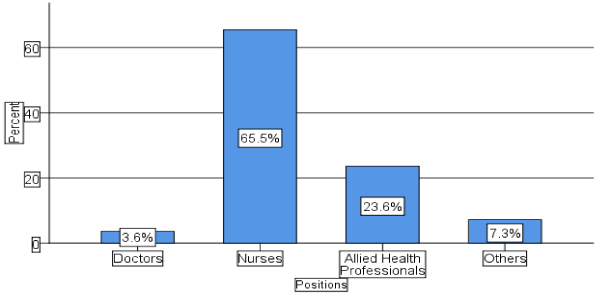 Figure 3: A bar chart of the position/cadres of the participants.
View Figure 3
Figure 3: A bar chart of the position/cadres of the participants.
View Figure 3
Concerning the participant working department, 40.0% of the participants were working at the maternity department, 3.6% reported working at the surgical department, and 12.7% worked at the pediatric, OTP for U5, and laboratory departments, respectively, as illustrated in Figure 4.
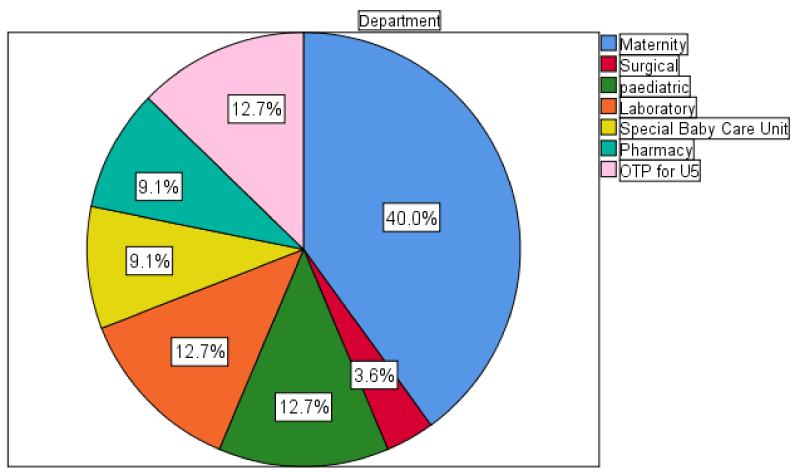 Figure 4: A pie chart showing the work department of the participants.
View Figure 4
Figure 4: A pie chart showing the work department of the participants.
View Figure 4
From Table 2, 34.5% of the participants responded in the affirmative that adequate training is the most significant factor, whereas 65.5% responded negatively. 49.1% reported the availability of resources (e.g., PPE, cleaning supplies), and 50.9% responded negatively. 56.4% reported that clear guidelines and protocols are a significant factor in IPC compliance, whereas 43.6% said no to the statement. 83.6% reaffirmed that positive reinforcement (e.g., recognition, incentives) is a key factor, but 16.4% did not agree with the statement. Peer support (65.5%) and fear of consequences (e.g., infections, penalties) (61.8%) further positively affirmed the statement as they are contributing factors forpositive compliance with IPC protocols.
Table 2: Factors influencing compliance with IPC protocols among frontline health workers. View Table 2
According to the participants, the major factors that can hinder compliance with the IPC protocol were fear or discomfort (e.g., wearing PPE) (52.7%) and cultural or personal beliefs (54.5%).
Participants were asked, "On a typical workday, how consistently do you adhere to the following IPC measures?" The majority (34.5%) reported always adhering to hand hygiene, followed by 27.3% who reported usually adhering to hand hygiene, whereas 9.1%, 20.0%, and 9.1% reported sometimes, rarely, and never, respectively. 29.1% reported always adhering to the use of PPE, 27.3% reported usually adhering to the use of PPE, and 21.8% sometimes adhered to the protocol. With regards to cleaning and disinfection of work areas, the majority (32.7%) reported sometimes adhering to the measures, whereas 25.5% stated sometimes adhering to such IPC measures (Table 3).
Table 3: Participants that have consistently adhered to IPC measures. View Table 3
When they asked the participants to state how familiar they were with IPC protocols, the majority (38.2%) reported being somewhat familiar, followed by 29.1% who reported being not very familiar, 20.0% were not at all familiar, and very few (12.7%) reported of being very familiar with the IPC protocols (Figure 5).
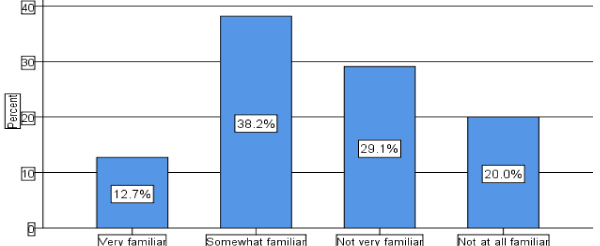 Figure 5: A bar chart of familiarity with IPC protocols.
View Figure 5
Figure 5: A bar chart of familiarity with IPC protocols.
View Figure 5
Regression analysis was done to determine the factors that have a significant relationship with knowledge of IPC protocols. The factors that revealed a significant relationship to the knowledge of IPC protocols were age (p = 0.000), gender (p = 0.005), Years of experience in healthcare (p = 0.005), and department (p = 0.013). Only positions that do not reveal a statistical relationship (p = 0.202), as shown in Table 4.
Table 4: Regression analysis of factors related to knowledge of adherence to IPC protocols. View Table 4
Table 5 indicates that the majority (29.1%) reported that IPC protocol compliance is "somewhat important," 27.3% reported "not important" at all, and very few (23.6%) reported "extremely important."
Table 5: Important compliance with IPC protocols. View Table 5
When the participants were asked what their main motivations for complying with IPC protocols were, 27.1% reported institutional policy, 27.3% reported patient safety, 12.7% reported personal health, 16.4% reported peer influence, and 14.5% reported fear of consequences. The findings are presented in Figure 6.
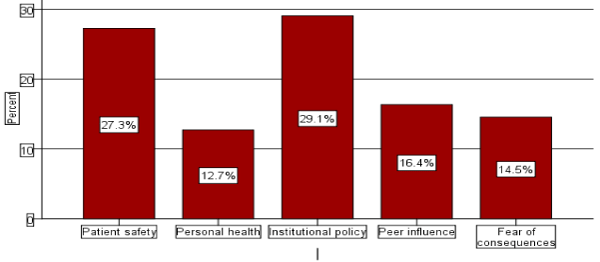 Figure 6: The main motivation for complying with IPC protocols.
View Figure 6
Figure 6: The main motivation for complying with IPC protocols.
View Figure 6
From Table 6, 54.5% of the participants reported that they usually performed hand hygiene before and after patient contact. The majority did not use PPE according to the hospital's guidelines, and they cleaned and disinfected surfaces in their work area.
Table 6: Practices and behaviours. View Table 6
Resource availability : Resources such as PPE (74.5%) and cleaning and disinfection products (67.3%) were reported as “Not Available." Others, such as hand hygiene supplies (e.g., soap and alcohol-based hand rub) (52.7%), waste disposal facilities (56.4%), and adequate ventilation (50.9%), were reported as “Abundantly Available" (Table 7 ).
Table 7: Resource availability. View Table 7
Key barriers, such as inadequate storage or distribution systems (29.1%) and High cost or limited budget (47.3%), were faced in accessing IPC resources, as shown in Table 8.
Table 8: Barriers to effective IPC. View Table 8
Barriers the participants face in receiving adequate IPC training : Typical barriers participants faced in receiving adequate IC training were inadequate training content or materials (47.3%), 23.6% reported time constraints or scheduling conflicts, and 21.8% reported insufficient training sessions or frequency, as presented in Figure 7 .
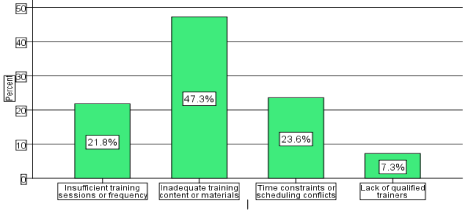 Figure 7: Barriers face in receiving adequate IPC training.
View Figure 7
Figure 7: Barriers face in receiving adequate IPC training.
View Figure 7
Most of the participants reported that they were informed about the IPC protocols during training, which were effective. Very few of them were able to recall a typical day at work when they implemented IPC protocols. Some find wearing PPEs and sanitation easier but find it difficult to comply with hand hygiene and other IPC measures.
Participants stated that if the resources are made available, they can serve as encouraging factors for complying with IPC protocols and vice versa. Regarding the resources and training, most of them reported that they were "sometimes insufficient," but the work environment greatly hinders the hospital because of poor management support.
Most of the participants interviewed reported that when they encounter limited resource provision, they choose not to follow the IPC protocols. Some said that because of fatigue and forgetting, they normally fail to comply with the measures. However, if the administration continues with training and supervision, they expect a high level of adherence.
Other key issues reported were persistent cultural and social factors in the workplace that can negatively hinder adherence to IPC measures.
This study revealed the most influential factors that favor adherence to IPC protocols, like sufficient training, resource availability, clear policies and protocols, reward or positive reinforcement, peer support, and managerial support. These findings are in agreement with other studies that emphasize the importance of these factors among the frontline workers in health facilities. For instance, the WHO report on IPC stressed that structured education and training, such as attendance at multidisciplinary workshops, participating in mentorship programs, and inclusion of IPC during employee orientations, is important [17]. Such measures greatly improve compliance since they equip frontline workers with practical skills and knowledge to apply the IPC protocols effectively.In another study, it was established that IPC training for healthcare workers is important. According to the study, effective training in hand hygiene, use of PPE, and aseptic techniques are important in effecting IPC [18]. In Pacific Island Countries and Territories, it was established that adequate resources are critical to IPC. The WHO IPC core components, which include resources for surveillance, multimodal strategies, and the built environment, were identified as core components of effective IPC programs [19]. One study on missed IPC activities identified system-level issues and resource allocation as significant predictors of IPC compliance, hence suggesting that IPC practices need adequate resources to be supported [20]. Further, WHO's Global Action Plan and Monitoring Framework on IPC, 2024-2030, indicated that there should be clear national and facility-level guidelines to support IPC practices [21]. The same has been indicated in the cited study as IPC in surgical care, which showed that national guidelines are important and are adapted from the recommendations of WHO and CDC, giving context-specific recommendations to healthcare settings [18]. A study among HCWs on IPC practices in Uganda indicated that continued practical training and reinforcement significantly improved knowledge and practices in IPC. Conclusion: Continued training is necessary to sustain knowledge and good practice [21]. Not exactly on IPC but relevant to it, a systematic review of peer support interventions at the higher education level shows that peer support may substantially improve adherence to protocols and practices. At the same time, one study investigating missed IPC activities before and after the COVID-19 pandemic found organizational support and management effort important in improving IPC practices [20]. Another described system-level improvements and routine management interventions in an attempt to routinize IPC practices among healthcare workers; this may suggest that peer support can reinforce IPC compliance [22].
However, this study further revealed that Factors that hinder compliance with IPC protocol among frontline workers are fear or discomfort with PPE, cultural or personal beliefs, and lack of understanding or misinformation. The results are aligned with the study done by C Houghton, P Meskell, H Delaney, M Smalle, C Glenton, A Booth, XHS Chan, D Devane, and LM Biesty [23] indicated that rapid qualitative evidence synthesis revealed that the discomfort associated with wearing personal protective equipment (PPE) was an important barrier to healthcare workers practicing the PPE. They indicated that ensuring proper fitting and addressing discomfort may present a way to overcome this barrier. Another study also indicated that the discomfort of PPE was among the major compliance barriers in healthcare settings due to poor fitting or when the use of PPE was judged inconvenient [24]. A study identified cultural and personal beliefs as significant compliance barriers to IPC. Some healthcare workers illustrate that isolating patients and the use of face masks are intimidating and stigmatizing for patients and, therefore, have lower compliance [23]. The same study revealed that personal beliefs and cultural attitudes toward the practice of infection control influenced compliance. Poor education on IPC and poor workplace culture were highlighted as the two most important barriers to good practice [23]. One study on the challenges of IPC policy compliance among healthcare workers demonstrated that poor training on IPC and poor awareness about standard precautions were the major reasons for poor compliance. The authors suggested an improved IPC training program to overcome the lack of knowledge [24]. A mixed-methods review highlighted that poor education in IPC and misinformation were seen as the major obstacles to the effective implementation of infection control. The authors recommended regular training and updating to enhance the depth of understanding and, thus, compliance [25].
Thus, the regression analysis indicated that the knowledge of IPC protocols was significantly related to age, sex, years of experience, and department, which suggests that demographic and professional characteristics were influential factors in IPC compliance. These are similar demographic and professional characteristics identified by other studies. Gaps in knowledge lead to non-compliance [26]. There is inequity in the level of knowledge of IPC among groups of health workers, and some studies have even indicated that nurses and doctors have a better knowledge of IPC compared to other health professionals [27,28].
The study's findings on attitudes toward IPC compliance, particularly the importance of PPE and cleaning and disinfection products, are in agreement with a study that emphasizes the role of these resources in encouraging adherence to IPC measures, as seen in the attitudes of FHWs in this study toward the importance of PPE and cleaning and disinfection products [29]. Organizational culture plays an important role in determining the attitude of health professionals toward IPC protocols. A supportive culture that stresses the importance of IPC and that provides the necessary resources and support for health professionals to apply these protocols results in higher levels of compliance [30]. FHWs reported that the practice regarding IPC protocols was poor, and this is likely to have an intense impact on compliance. Qualitative insights provided by this study, for example, on the mixed effectiveness of training and the influence of cultural and social factors, find evidence in qualitative research in the field.
This study exposes some limitations. First, it was bound by the specific health setting and populations that were studied, raising concern about the generalizability of the results. Secondly, self-reporting could raise bias because subjects may over-report or underreport their adherence to IPC protocols. Thirdly, a cross-sectional design did not enable an establishment of the identified factors and compliance with IPC. Also, the study does not look into the interrelation of organizational, cultural, and individual factors in IPC adherence due to its limitations. Other studies should, therefore, not make these same limitations by taking longitudinal approaches in varied settings, using objective measures of compliance.
This study concludes that IPC compliance is influenced by both enabling and hindering factors; the key facilitators include training, resource availability, clarity of guidelines, reinforcement, peer and management support, and a conducive organizational culture. Major barriers reported were traced to the discomfort of PPE, cultural or personal beliefs, misinformation, and demographic and professional knowledge disparities, which grossly impede compliance. The present study calls for tailor-made interventions aimed at overcoming those identified barriers and capitalizing on the facilitators in order to improve IPC adherence among frontline healthcare workers.
The datasets analyzed during the current study are available from the corresponding author upon reasonable request.
I want to express my gratitude to the management of the Kailahun Government Hospital for allowing me to conduct this study in their health facility.
This research did not receive any external funding.
M.S. was responsible for the background, study design, and conceptualization; drafted the original manuscript; developed the methodology, data analysis and interpretation, and discussion; reviewed the original draft, methodology, and data analysis; approved the final version of the manuscript after reviewing it according to the journal standards, and also served as the corresponding author.
The Sierra Leone Ethics Review Board (MoHS, Freetown) approved the study proposal. The assigned healthcare personnel obtained informed consent prior to initiating data collection at the hospital level, ensuring that individuals were fully aware of the purpose, process, and potential implications of their participation. Participants’ names were kept on a password-protected database and linked only with a participant identification number. All the data involved in this study are restricted to the investigator's use.
Not applicable.
The author declares no competing interests.